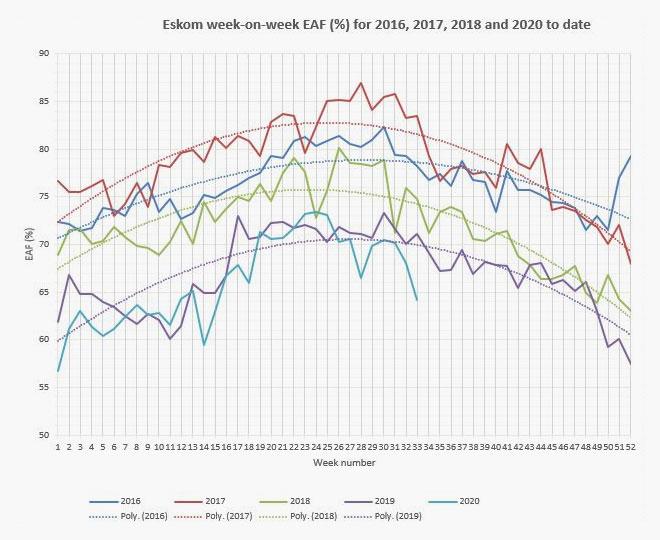Eskom wants South Africans to pay more for electricity amidst severe load-shedding and a history of corruption and mismanagement.
The power utility recently said South Africans should expect a 15% electricity price increase on 1 April 2021.
The price hike announcement came at a time when South Africa is suffering the worst bout of load-shedding in history.
On Wednesday, Eskom implemented stage 4 load-shedding due to multiple unit breakdowns and high demand.
The bad news for South Africans is that load-shedding is here to stay in the foreseeable future.
Eskom told Parliament it expects power constraints to persist for at least the next year and warned that load-shedding may extend into 2022 depending on the pressure on the system.
Research by the Council for Scientific and Industrial Research (CSIR) painted an even gloomier outlook for the country.
CSIR researchers said South Africa should brace itself for exponential increases to load-shedding until 2022.
“Not only will load-shedding continue over the next few years – it will get significantly worse,” the CSIR said.
Price increases when Eskom cannot keep the lights on
Eskom is asking South Africans to pay more for electricity when many people have lost their jobs or had to take salary cuts because of the economic downturn.
Adding to the pain is that Eskom cannot even keep the lights on and that most of its problems are self-inflicted through corruption and mismanagement.
Eskom is therefore expecting South Africans to give it more money in the hope that it will not simply squander or steal the money as it did previously.
Instead of increasing prices, many stakeholders have urged the power utility to cut costs by reducing its bloated workforce and stopping corrupt contracts.
Eskom is, however, not really looking at addressing the problem of its large and overpaid workforce.
It would rather risk damage to the economy through higher electricity costs than touch the sensitive issue of staff cuts.
Eskom spokesperson Sikonathi Mantshantsha admitted that the cost of electricity is increasing while the service levels are decreasing.
He also admitted that load-shedding is one of the factors which led to job cuts in South Africa.
Eskom explains
Mantshantsha said the reality is that Eskom is operating ageing infrastructure which has been neglected over the past few years.
The power utility has also had reducing sales every year which is putting financial pressure on the company.
He said as South Africa, we do not have the option of doing nothing and allowing Eskom to degenerate into total rot.
“The current and future management teams have an obligation to invest in the business to ensure a continuous supply of electricity,” said Mantshantsha.
This explanation from Eskom is nothing new, but it has continually failed South Africans and squandered the extra money given to it.
Mantshantsha admitted that Eskom has done a poor job over the past decade in running the company efficiently.
Despite historical theft and the wasting of taxpayers’ money, he said there is no other option than asking for more money again.
“We do not have the option or luxury of pointing fingers,” he said, adding that Eskom must invest in the business for the future.
He confirmed they have to weed out all the efficiencies which are costing South Africans money, but said that not asking for more money was not an option.
The question Eskom is not answering
Mantshantsha hammered on the fact that Eskom cannot sit back and needs more money to turn the struggling company around.
He added that Eskom is working hard to recover money lost through corruption and has taken steps to create a more responsible company.
He said they cannot eradicate corruption and inefficiencies overnight, but that Eskom is doing everything in its power to “correct the ship”.
While Eskom is talking a big game, many key indicators show that things are getting worse.
Eskom’s debt has hit a record high of R488-billion as of March 2020 and South Africa is experiencing the worst load-shedding in history.
Eskom’s energy availability factor, which shows the percentage of Eskom’s generation capacity which is available, has also nosedived in recent years.
As Mantshantsha promised South Africans that things are changing, MyBroadband asked Eskom the following question:
- How can we measure whether Eskom is improving or not, using publicly available data?
Eskom is, however, unwilling to provide an answer to this question.
The chart below shows Eskom’s energy availability factor since 2016.


